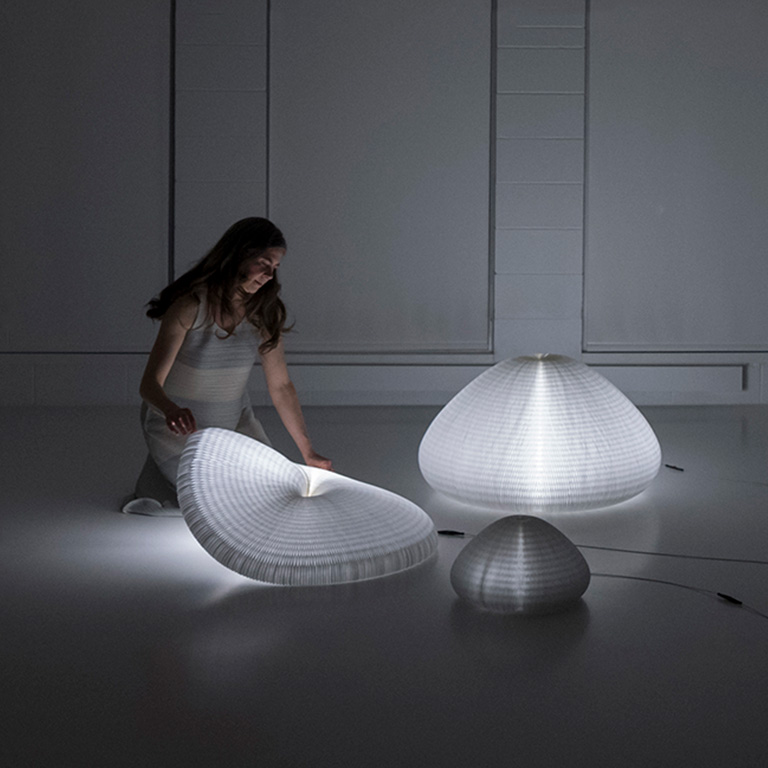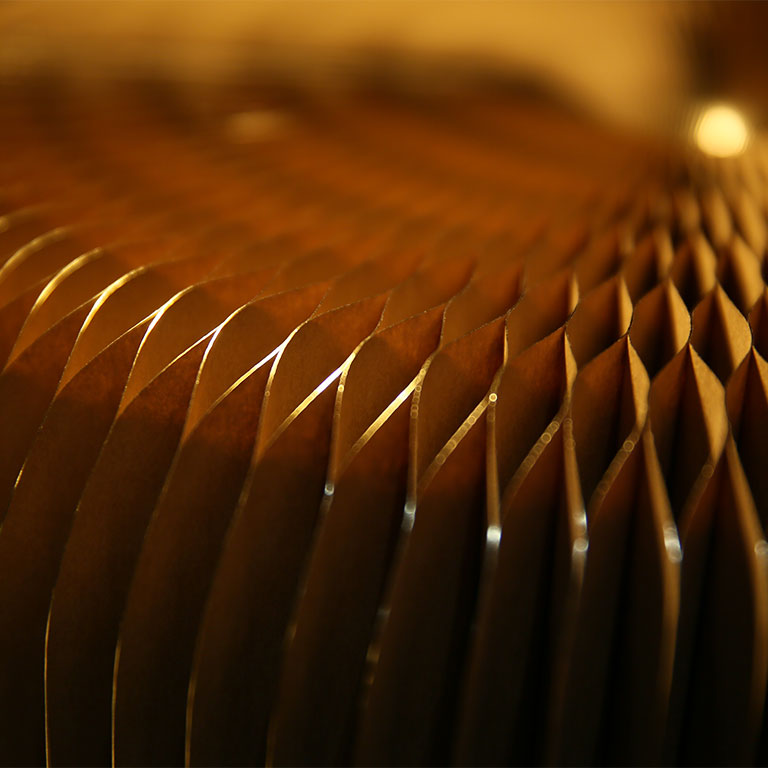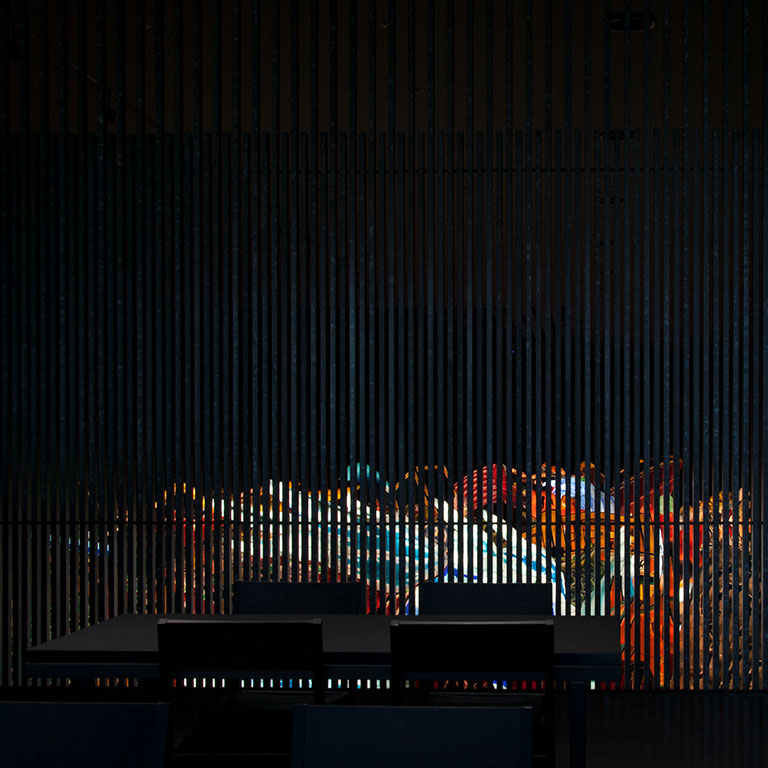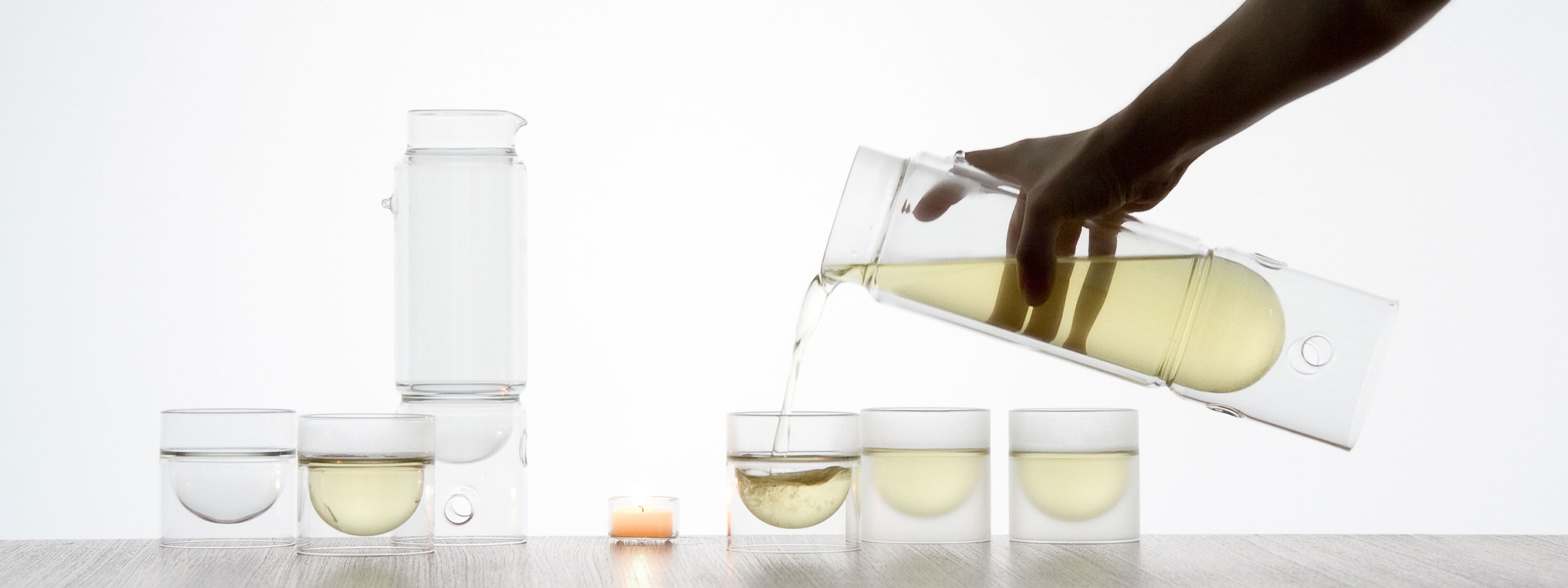

developing float glassware
the story of float begins in 2001. As with most things that Stephanie Forsythe + Todd MacAllen design, it was the result of a confluence of ideas. Regular tea drinkers, the designers found inspiration in their Wagenfeld glass teapot. Designed in 1931, the transparent teapot emphasizes the colour and infusion of the tea. Having recently graduated from Architecture school and experiencing their first forays into designing homes, Forsythe + MacAllen were attracted to smaller items that could be self-financed, from design to production, leaving them free to follow their intuition. They began seeking ways to enhance the experience of daily routines by creating objects that emphasize the pleasure and delight of everyday moments.
at the same time, the partners were developing an entry for the Aomori Northern Style Housing competition. The original model, pictured below, included buildings enclosed by two layers of glass and separated by an outdoor deck that wrapped the perimeter of each building. Many of the same interests and issues arise when designing smaller objects as they do with designing buildings. They both involve considering the experience of life in that space. A teapot possesses spatial dimension due to the quality of light, smell, warmth and its power to create a centre for gathering—much like a hearth. With a building, you must consider the relationship between the building within the site and the site within the city. Product design requires thinking about the object in its environment, not just about the object itself.
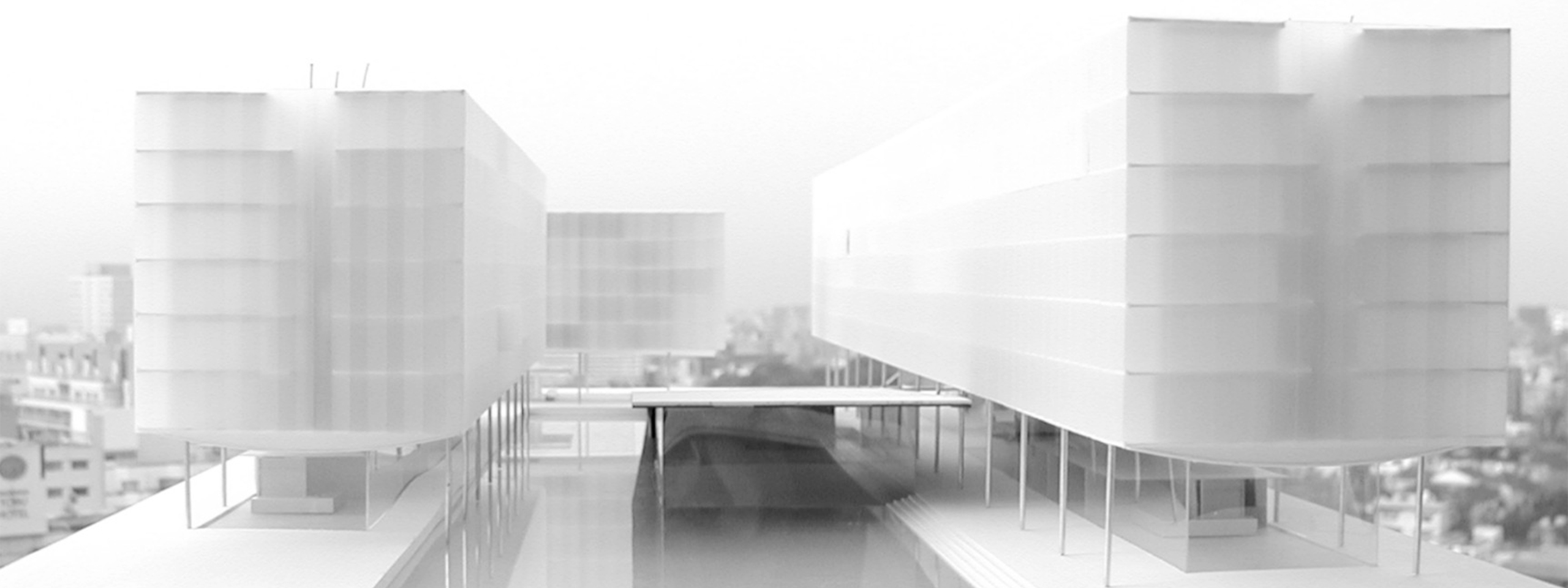
with that budding inspiration, Forsythe + MacAllen began studying the methods and tools that scientific glassblowers use to make one-off labware. As they learned about the glass cylinders that are used as a starting point, they specified standard tube and wall thickness dimensions and paid special attention to maintaining the purity of this original form.
from there, they created drawings for float tea lantern and tea cups and entered them in the Design 21 Competition. Winning the competition, they used the prize money to produce the first tea set. The prototypes were then submitted to the 2002 AR+D Awards for Emerging Architecture, an architecture competition also open to design objects. float was honoured with an AR+D Award, which brought even further attention. With so much interest, Forsythe + MacAllen were motivated to begin commercial production. Giving themselves the deadline of presenting the set at ICFF, they began seeking a manufacturer.
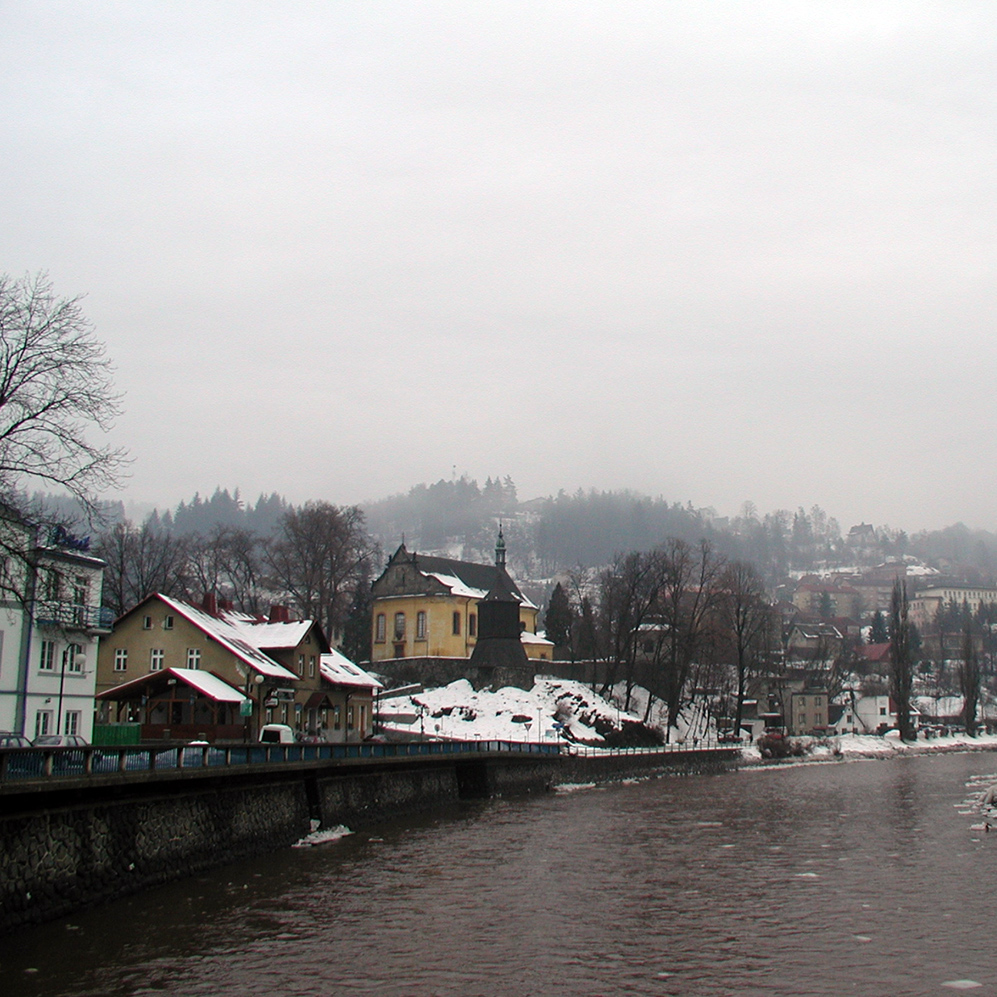
seeking a manufacturer
Forsythe + MacAllen understood that the history of Bohemian glass dates back to the 15th century and that the Czech Republic continues as a great glass blowing culture. Through further research the designers found that borosilicate glass blowing is done at many small factories surrounding Prague.
fortuitously, the partners had won a trip to Italy to visit and tour Flos’ workshops. They travelled to the Czech Republic on the same trip in search of a skilled manufacturer for the set. They visited many glassblowers, but could not quite find the right fit. However, the craftspeople they encountered were exceptionally kind and would often recommend another glassblower to visit.
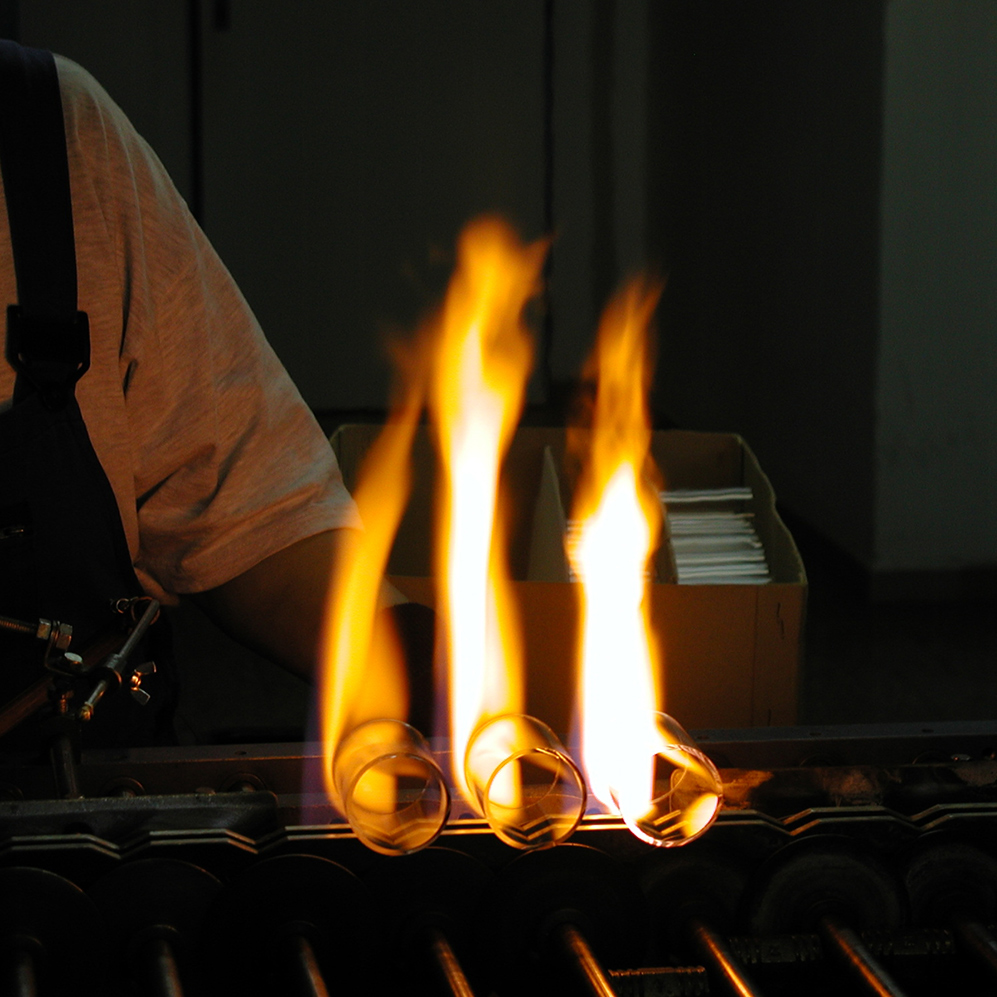
several of these kindly glassblowers actually drove the designers to the factories they were recommending. In this way, they crossed the snowy, rolling landscape of the Czech countryside, learning the history of how these smaller factories had been started by brave entrepreneurs as the Czech Republic broke away from the Soviet Union.
under communism, all of the glassblowing talent had been consolidated in a giant mothership of a factory. As the government started to crumble, these entrepreneurs left the big factory to create smaller start-ups. They were doing this early enough that they risked trouble from the Soviets. It was a courageous effort by these small business owners and great inspiration for a pair of young designers at the start of their own path.
on the final afternoon of the trip, Forsythe + MacAllen found the right studio. It is in a very old village, just north of Prague. The village also turned out to be the home of Stanislav Libensky and Jaroslava Brychtová, a husband / wife team of glass artists and great favourites of Forsythe + MacAllen.

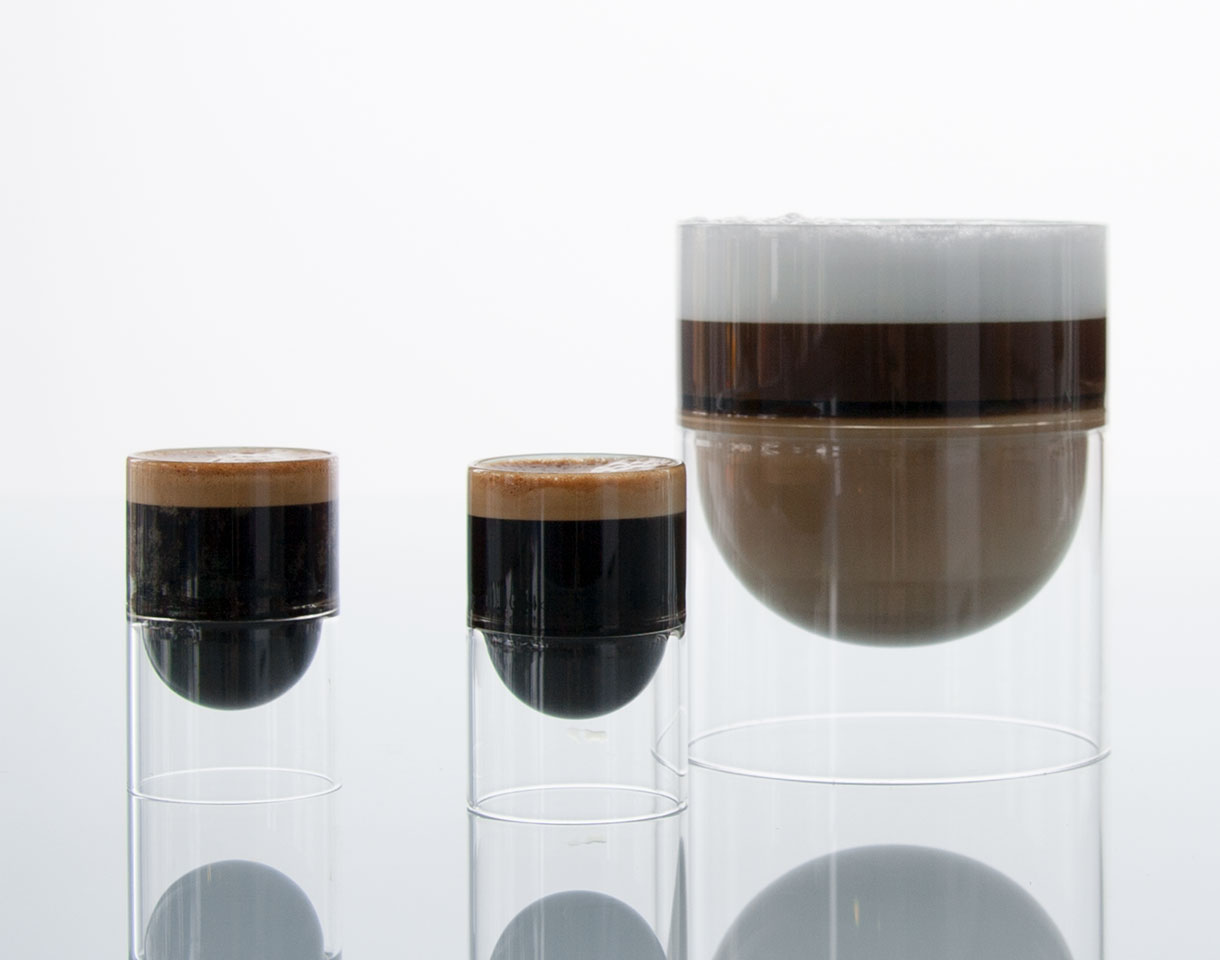
the collection grows
although the last pieces arrived in Vancouver from the Czech Republic just two weeks before the show, float glassware premiered at ICFF in 2004, right on schedule. The tea set was very well received, and molo took home an award for Best New Designer.
further pieces in the float collection came about as Forsythe + MacAllen researched other standard sizes of borosilicate glass tubes. As borosilicate glassware has a negligible coefficient of thermal expansion, the glass does not expand or contract with changes in temperature. This resistance to thermal shock makes the glass an obvious choice for a tea set, but it means that the glass can be worked in various different ways.
the designers would take a tube of a certain diameter and consider what it could be. While visiting the Czech Republic, they noticed that the flutes used for their famous pilsners are much more elegant than North American beer glasses. The elongated, smaller Czech glass is a bit like a champagne flute. They also began to consider actual champagne flutes. This began a great deal of drinking and thinking about the different sizes of tubes and how they might emphasize the qualities, rituals and social significance of different beverages.
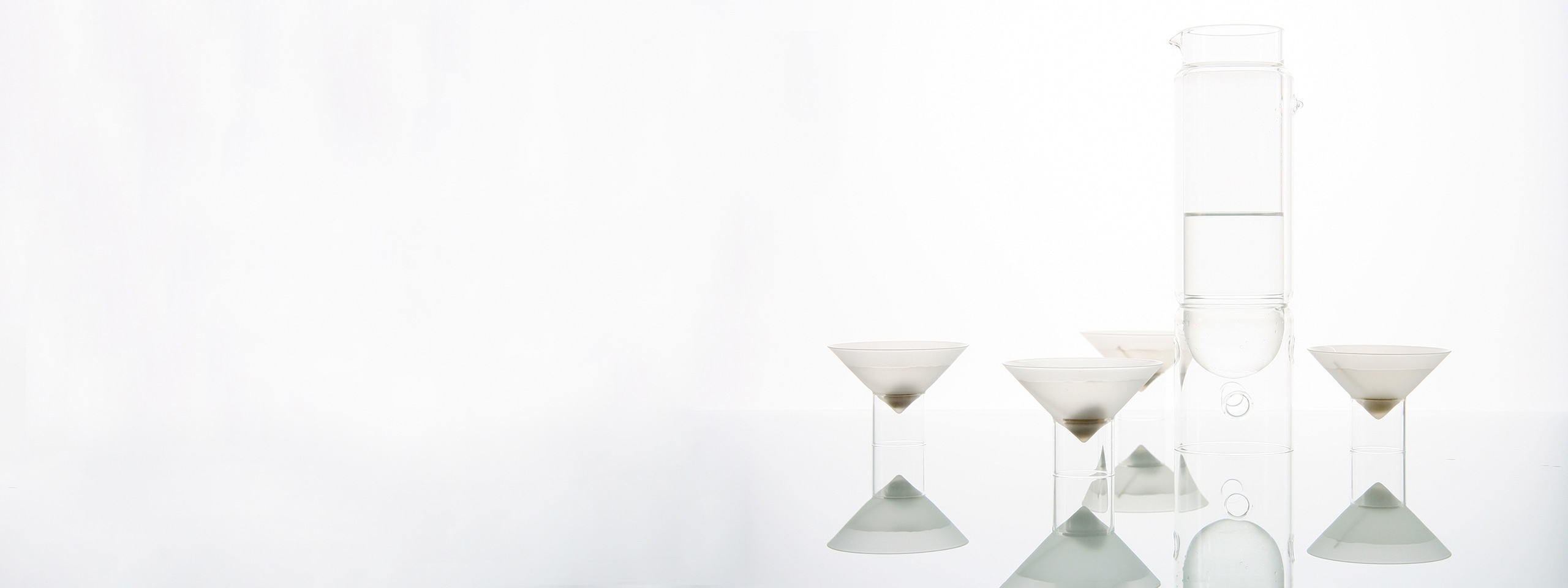
a close study
with all the effort that comes with learning to craft something—production methods, materials and quality control—it is natural to consider what else might be made with these methods. This is the approach that Stephanie Forsythe + Todd MacAllen have taken to all their work. Their philosophy revolves around close study of a material or process, rather than designing a wide variety of different things using different processes. Making other items with the same materials and processes sometimes reveals a way to improve or rethink the first object and vice versa.
Stephanie Forsythe + Todd MacAllen made drawings for the entire collection of float glassware; each piece involved iterative prototypes that were tested, tasted and tweaked. The following year, the entire float family was made available. A hot pot of tea on the studio desk is a treasured companion, and molo takes pleasure knowing that other people in the world find a little extra joy in their daily rituals with float glassware.
